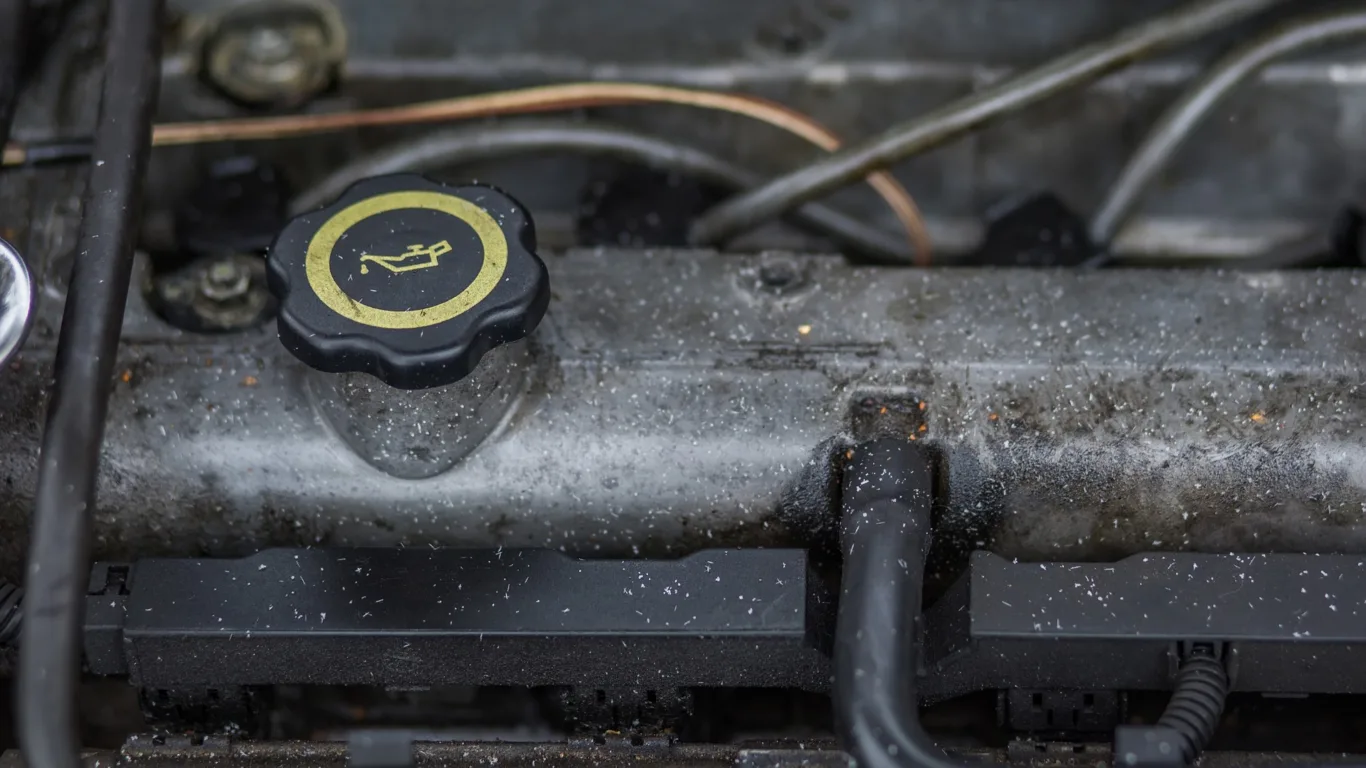In this comprehensive guide, we will delve into the intricacies of engine oil viscosity and quality issues, helping you make informed choices for your vehicle’s needs.
Engine oil is a vital component of any vehicle, ensuring smooth operation and protecting the engine from wear and tear. While most engine oils are manufactured to meet acceptable standards, the quality and performance can vary significantly.

Poor-quality engine oils, often resulting from ignorance or greed, can pose serious risks to the engine’s health. Unfortunately, for uninformed automobile owners, it can be challenging to differentiate between high-quality engine oils and those of poor quality, as they may look and feel the same.
The Role of Engine and Bench Tests
Engine tests have always been the ultimate method for determining the required quality of engine oil. As engine designs evolve to meet performance, fuel efficiency, and environmental standards, the engine continues to serve as the ultimate arbiter of oil quality.
However, conducting engine tests to measure oil quality can be an expensive proposition. To control warranty costs, engine manufacturers resort to the development and use of engine tests for determining the specific oil quality needed for a particular design or component.

Creating repeatable dynamometer tests for engines can be challenging, especially as engine designs become more powerful. Fortunately, once the quality level has been determined on the dynamometer or in the field, there is a less expensive approach to more precisely appraising oil quality. This involves using laboratory bench tests designed to correlate closely with engine dynamometer tests or field experience.
These bench tests provide a relatively inexpensive measure of oil quality, but their value and significance depend on factors such as identifying the engine’s specific needs, clear and consistent information from the engine, and understanding the relationship between the engine’s needs and the oil’s physical and chemical properties.
Understanding Viscosity: A Key Property of Engine Oil
Viscosity, often considered the most important physical and chemical property of engine oil, refers to its resistance to flow. It determines how easily the oil flows and lubricates the engine’s moving parts. In simple terms, viscosity can be described as the fluid’s friction. Larger molecules in the oil have more attraction between them, leading to higher viscosity. The energy required to overcome this molecular attraction and produce fluid flow is a form of friction.
Viscosity plays a crucial role in preventing wear and tear in the engine. When two engine surfaces in relative motion come into contact under pressure, the oil’s molecular friction prevents it from escaping too quickly. This incompressibility and the oil’s level of viscosity hold the surfaces apart, preventing wear and tear in a process known as hydrodynamic lubrication. The higher the viscosity, the greater the attraction between oil molecules, resulting in enhanced wear protection.
Viscosity Classification: The Importance of Grades
Recognizing the significance of viscosity in engine function, the Society of Automotive Engineers (SAE) introduced the J300 classification system. This system establishes viscosity levels for engines based on a series of grades. The grades are defined by viscosity levels in specific temperature zones, including operating temperatures and winter temperatures affecting starting and pumping. In the early years of automotive engines, oils were simply formulated and obeyed Newton’s equation for viscosity, where the viscosity remained constant at all shear rates. These oils were essentially single-grade and did not carry SAE “W” classification.
However, in the 1940s, it was discovered that adding small amounts of high-molecular-weight polymers could give the oil the desired flow characteristics for both low-temperature starting and high-temperature engine operation. These polymer-containing oils were listed as multigrade engine oils in the SAE viscosity classification system, meeting the requirements of viscosity temperature zones.
Multigrade oils, such as SAE 10W-40, 5W-30, and 0W-20, have become popular, but they have non-Newtonian flow characteristics, with viscosity decreasing as shear rate increases. This characteristic is important for engines operating at high shear rates.
To measure viscosity in engines under operating temperatures, a high shear rate viscometer called the tapered bearing simulator viscometer was developed. This instrument measures shearing torque, shear stress, and shear rate, making it the only known viscometer capable of doing so.
Viscosity and Oil Gelation at Low Temperatures
Multigrade engine oils were introduced to reduce oil viscosity at low temperatures, aiding in engine startup. This improvement in engine startability was immediately evident and resulted in the widespread use of multigrade oils. However, a new problem surfaced – oil pumpability. Lack of oil pumpability could lead to engine damage.
In cold-room dynamometer tests, two forms of the pumpability problem were identified: flow-limited behavior due to high viscosity and gelling of the oil during long, deep cooling cycles, known as air-binding.
To address these issues, a bench test was developed to indicate the oil’s tendency to gelate. This test involved continuous low-speed operation of a cylindrical rotor in a loosely surrounding stator. The technique, incorporated into engine oil specifications as ASTM D5133, not only indicates the oil’s flow-limited tendency but also specifies the degree of gelation that might occur over a measured temperature range.
This parameter is known as the gelation index, and modern engine oil specifications for multigrade oils require a maximum gelation index of 12.
Viscosity and Energy Absorption: Balancing Wear Protection and Operating Efficiency
While viscosity is crucial for wear protection through hydrodynamic lubrication, it also has negative aspects that can affect the engine’s operating efficiency. The molecular friction created by viscosity requires energy to overcome, leading to energy loss from the engine. Careful formulation of oil viscosity is critical for vehicle owners and governments mandating fuel economy limits. Lowering oil viscosity can help reduce viscous friction and improve fuel efficiency.
In recent years, there has been an increase in the number of automobiles operating with engine oils that have lower viscosity levels. These lower viscosity oils, such as SAE 0W-20 and 5W-20, have improved engine efficiency. Japanese automakers have even called for lower viscosity grades, resulting in the introduction of SAE 16, 12, and 8 operating grades. These lower viscosity oils have the potential to significantly improve fuel efficiency but are only suitable for engines designed for their use.

To calculate the effects of engine oils on fuel efficiency, a technique known as the viscous fuel efficiency index (V-FEI) was developed. The V-FEI takes into account the viscosity values obtained at high shear rates associated with specific engine sections. This index provides a comparative value for engine oils, with higher V-FEI indicating less energy loss to viscosity and greater fuel efficiency. The average V-FEI for SAE 0W-20 and 5W-30 engine oils has been increasing over the years, showing the positive impact of lower viscosity grades on fuel efficiency.
Engine Oil Volatility: Balancing Viscosity Reduction and Oil Consumption
Reducing oil viscosity often involves using base oils with higher volatility. Volatized oil reduces the amount of lubricant serving the engine and may carry exhaust catalyst-contaminating components, negatively affecting the catalyst’s smog-reducing ability. It is crucial to strike a balance between viscosity reduction and oil consumption to ensure optimal engine performance.
The volatility of multigrade engine oils has been a subject of study, with the introduction of SAE 0W-20 and 5W-30 classifications designed to meet volatility specifications. In recent years, these classifications have shown compliance with the International Lubricant Standardization and Approval Committee’s (ILSAC) maximum volatility specifications. This suggests that volatility control may be less demanding for newer multigrade oils, such as SAE 0W-16, 0W-12, and 0W-8.
Phosphorus Emissions and Volatility: Protecting the Catalytic Converter
Phosphorus-containing compounds, such as zinc dialkyldithiophosphate (ZDDP), have long been used in engine oil formulations for their anti-wear and antioxidation properties. However, phosphorus and sulfur can deactivate exhaust catalytic converters by coating them, reducing their effectiveness in reducing smog. Restrictions have been imposed on the quantity of these chemicals in engine oil and fuel to protect the environment.
The Selby-Noack volatility test was developed to determine engine oil volatility more accurately and safely. This test revealed that phosphorus additives in engine oils also produced phosphorus through additive decomposition, posing a risk to the catalytic converter. To measure this risk, the phosphorus emission index (PEI) was introduced, indicating the amount of phosphorus released during the test.
Over the years, considerable progress has been made in reducing phosphorus decomposition and volatility in multigrade SAE 0W-20 and 5W-30 engine oils. The reduction in PEI levels to a maximum of 12 milligrams per liter signifies significant protection for catalytic converters. Phosphorus content in engine oil does not directly correlate with phosphorus volatility, with low correlation coefficients between the two. The ongoing reduction in PEI levels demonstrates the industry’s commitment to protecting the environment while maintaining engine performance.
Conclusion
Understanding engine oil viscosity and quality issues is crucial for maintaining the health and performance of your vehicle’s engine. The viscosity of engine oil directly affects wear protection, fuel efficiency, and oil consumption. By choosing the right viscosity grade and understanding the correlation between viscosity and engine performance, you can ensure optimal engine lubrication and minimize any negative impacts on the environment.
As the automotive industry evolves, the need for high-quality engine oils becomes even more critical. Bench tests and engine tests play a vital role in determining oil quality, providing valuable insights into oil performance under various conditions. By staying informed about the latest developments in engine oil technology and adhering to industry specifications, you can make informed choices for your vehicle’s needs.
Remember, engine oil is not just a lubricant; it is the lifeblood of your engine. Choose wisely, and your engine will thank you with years of reliable performance.
